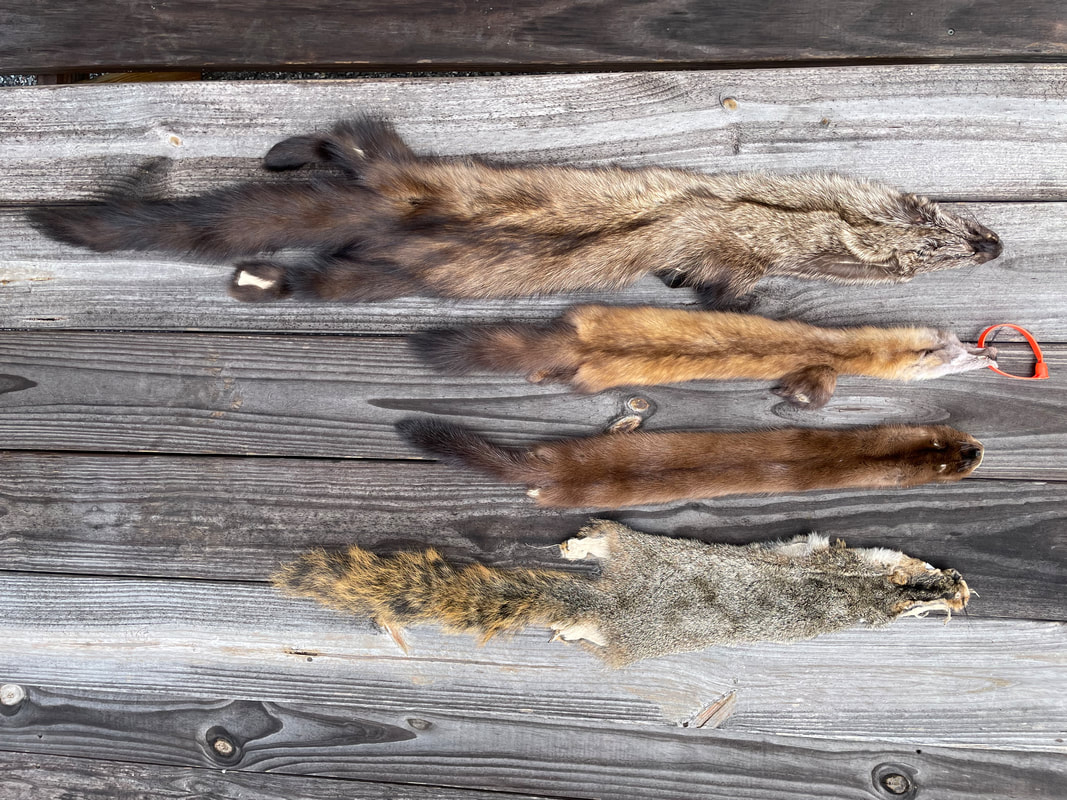Public urged to learn about marten, give educated feedback ahead of PGC April 13 reintroduction vote4/1/2024 Riverkeeper's note: The following blog post was written by Northern Tier Regional Director Emily Shosh, pulling from an interview from the most recent Middle Susquehanna Riverkeeper Podcast between Riverkeeper John Zaktansky and PA Game Commission furbearer biologist Tom Keller. A native Pennsylvania wildlife species missing from our woodlands for more than a century faces a critical reintroduction vote in the coming weeks, and Pennsylvanians are encouraged to learn as much about this species and provide feedback -- one way or another -- before it is too late. The American Marten, a true opportunist and omnivore that plays a number of key roles in the heavily forested habitat regions of the state found ideally in the PA Wilds region, could be reintroduced if it receives enough support at an April 13 Pennsylvania Game Commission board meeting. The decision was supposed to be made earlier this year but was tabled to April's discussion, according to agency furbearer biologist Tom Keller.
Extensive diet studies on the marten have concluded that negative effects from the Marten to currently threatened species will not occur. Furthermore, larger predator species sharing the same habitat with Marten including coyote, bobcat and fisher were deemed unlikely to pose negative effects on the Marten.
“Ecologically, it is likely to have a beneficial outcome because it is a missing piece of our community,” said Keller. Some social media pushback to the reintroduction includes concern for small livestock animals and chickens, which Keller agrees is a valid response. However, given the marten's habitat preference, he pointed out they are unlikely to venture towards open fields or farms. Residents of the PA Wilds of course may still be at risk of a chicken coop raid, but Keller explains that any good management of the flock will prevent predation by the Marten. Protections against mink, coyote, raccoons and others will also be effective against martens. Keller added that worries for other game species have also been voiced and are also valid. These concerns for species like turkey and grouse have been addressed through marten diet studies, where these species’ abundance in the diet were either low or non-existent. Pennsylvania has been leading the nation in species reintroduction over the last 100 years, with each generation seeing the work that will benefit the next generation to come. The process to decide on reintroduction is lengthy but calculated, involving a strategic plan, feasibility assessment, reintroduction and management plan, time for public comment, and education and outreach endeavors. On April 13, the game commission will decide whether or not to move forward with the Marten reintroduction. If the decision to move forward comes to be, a 10-year reintroduction and management plan will be put into place and five release sites will be used over six years, with one site being used for release per year. Sixty marten at each site will be released. The marten will likely be sourced from a variety of states and Canadian provinces, according to Keller. The remaining four years of the reintroduction will involve monitoring and further studies, although “monitoring will occur the moment the first marten is released,” Keller said. To learn more about the American marten reintroduction, visit the game commission’s page dedicated to this project. Keller also shared that education and outreach events on the subject have been taking place, with some digital resources like this story map also available. The PGC April 13th board meeting begins at 8:30 AM for those looking to provide comments on the reintroduction decision. Questions on the project can also be forwarded to [email protected] or [email protected] In addition to his extensive recent work on the marten reintroduction plan, Keller admitted during the most recent episode of the Middle Susquehanna Riverkeeper Podcast, that in 12 years of working with the game commission plus five years with the USDA Wildlife Services, hefeels fortunate to have experienced many challenges and gratifying opportunities. One standout example is his time as a graduate student and field biologist working with the American Woodcock, also nicknamed the “Timberdoodle.” His work involved infrared technology at night to locate nesting sites. Woodcock can be heard this time of year across the watershed singing their unique “peent!” mating call, typically near dusk. Another example also involves the Peregrine Falcon. While working in the southwest region as a Biologist 1, Tom banded peregrines by rappelling off of bridges, buildings, and other features to reach nests and retrieve hatchlings for study before being returned home. Keller additionally worked on several other diverse projects with black bear cubs, bats, woodrats and more. You can contact him directly at [email protected]
1 Comment
Leave a Reply. |
AuthorsRiverkeeper John Zaktansky is an award-winning journalist and avid promoter of the outdoors who loves camping, kayaking, fishing and hunting with the family. Archives
July 2024
Topics |



 RSS Feed
RSS Feed